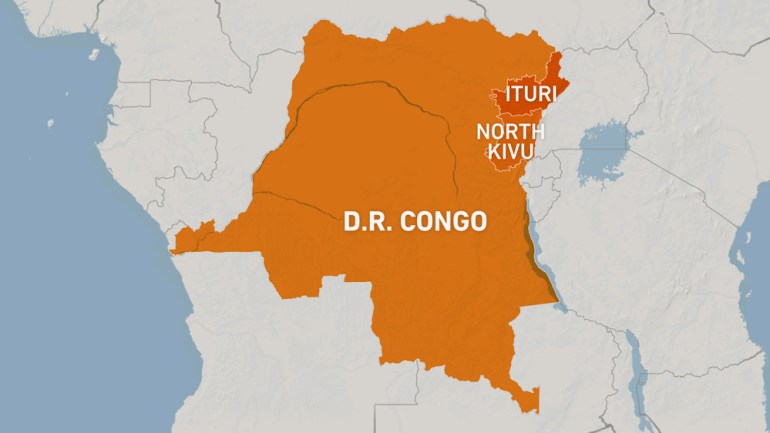Summary killings, human-rights abuses surge in eastern DRC
According to the UN’s Joint Human Rights Office, 293 civilians were killed in August, including 63 women and 24 children.

The United Nations has said summary killings in eastern Democratic Republic of the Congo (DRC) soared in August, driven by armed groups but also security forces.
In a new conference in the DRC’s capital, Kinshasa, on Wednesday, the UN peacekeeping mission MONUSCO said 739 cases of breach of human rights were recorded last month, compared with 492 in July.
Keep reading
list of 3 itemsMore than dozen people killed by rebels in east DR Congo
DR Congo accepts US military help against ADF militia
These resulted in the deaths of at least 293 civilians, including 63 women and 24 children, according to the estimate, compiled by the UN’s Joint Human Rights Office (UNJHRO) in the DRC.
Ninety-four percent of the documented cases in August occurred in the troubled North Kivu and Ituri provinces.

These provinces have been placed under extraordinary “state of siege” measures since May aimed at quelling armed groups that have been roaming the region for more than a quarter of a century.
“Agents of the state” accounted for nearly 55 percent of the cases, including the extrajudicial killings of at least 40 civilians.
Armed groups were responsible for the other 45 percent of recorded abuses, although the number of killings attributed to them – at least 253 – was far higher.
UNJHRO was set up in 2008 to monitor human rights abuses, especially for women, children and vulnerable people.
Its chief, Abdoul Aziz Thioye, told reporters the “state of siege”, under which senior civilian posts have been taken over by military or police officers, had enabled “some improvements in the security situation” but “many challenges remain”.
In particular, he expressed concern for the districts of Irumu and Djugu, which have been targeted by the Allied Democratic Forces (ADF) armed group.
“A new tendency” had emerged with the long-running armed group, which was sharpening ancient disputes between ethnic communities by teaming up with one group against the other, Thioye said.
When the armed forces attack the ADF, the group responds by dispersing into small units and extending into a wider area, he said.
“The threat is very complex,” he said.